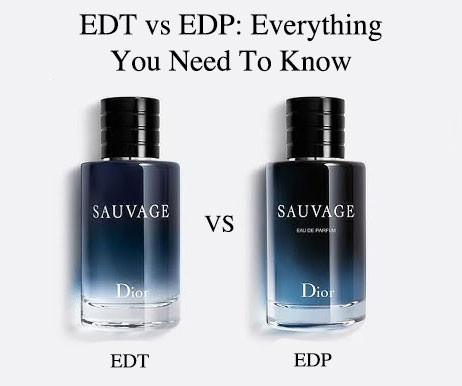
Choosing between Eau de Toilette (EDT) and Eau de Parfum (EDP) can be perplexing for fragrance enthusiasts. These classifications are fundamental in the fragrance world, dictating not just scent intensity but also longevity, projection and sillage. Understanding the disparities between EDT vs EDP is key to finding your ideal fragrance match.
What is EDT?
Eau de Toilette, often abbreviated as EDT, is a fragrances concentration with a lower aromatic oil content, typically around 5-15%. Its formulation emphasizes the top and middle notes, offering a refreshing and lighter scent profile. EDTs are generally preferred for daytime wear due to their subtle yet invigorating nature.
Characteristics of EDT
- Lighter concentration of aromatic oils.
- Usually, a fresher and more fleeting scent.
- Ideal for everyday use and warmer climates.
- Generally more affordable than EDP due to lower oil content.
What is EDP?
Eau de Parfum, known as EDP, boasts a higher concentration of aromatic oils, ranging from 15-20%, sometimes even higher. This higher oil content results in a richer, more intense scent that tends to linger longer on the skin. EDPs often highlight the fragrance’s base notes, offering a more complex and long-lasting olfactory experience.
Characteristics of EDP
- Higher concentration of aromatic oils.
- Deeper, more long-lasting fragrance.
- Suited for evening wear or colder seasons.
- Usually priced higher than EDT due to increased oil content and longevity.

Differences Summarized
- Concentration: EDT contains a lower oil concentration (5-15%), while EDP has a higher concentration (15-20%+).
- Scent Intensity: EDT offers a lighter and fresher scent, whereas EDP provides a richer and more intense fragrance experience.
- Longevity: EDP tends to last longer on the skin compared to EDT due to its higher oil content.
Choosing Between EDT and EDP
- Consider the occasion: EDT for daily wear or warmer weather, while EDP is ideal for evenings or cooler climates.
- Evaluate personal preferences: Do you prefer a lighter, more subtle scent (EDT) or a stronger, long-lasting fragrance (EDP)?
- Test fragrances: Experiment with both EDT and EDP versions of a scent to understand how they develop on your skin.
Conclusion
In the realm of fragrances, EDT and EDP stand as distinctive categories, offering varied scent intensities and durations. Whether you opt for the ephemeral allure of an Eau de Toilette or the enduring richness of an Eau de Parfum, understanding their differences enables you to make informed choices that align with your preferences and occasions.
EDT vs EDP FAQs
What is the main difference between EDT and EDP?
There are several differences between these two scent classifications. Some of the main differences as outlined above include oil concentration, scent intensity and longevity.
What’s better between EDT and EDP?
There isn’t a better option per se. Ultimately, it comes down to personal preference. Whether you like lighter, fresher, smells during the day or stronger smells that project in the winter, it all comes down to what you’re looking for. I’d recommend having an option for both profiles depending on the use.
What’s better between EDT and EDP?
There isn’t a better option per se. Ultimately, it comes down to personal preference. Whether you like lighter, fresher, smells during the day or stronger smells that project in the winter, it all comes down to what you’re looking for. I’d recommend having an option for both profiles depending on the use.
